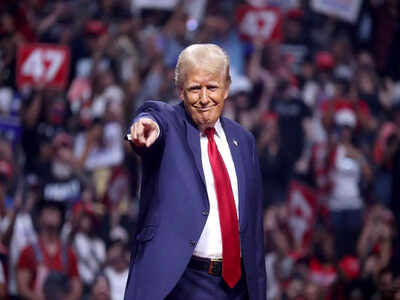European Commission President’s call to Donald Trump may have got EU time, but the real tough job remains on Tariffs

The European Union recently secured a temporary reprieve from U.S. President Donald Trump’s threatened 50% tariffs on EU imports, following a pivotal phone call between Trump and European Commission President Ursula von der Leyen. The decision delays the tariffs, originally set to take effect on June 1, restoring a July 9 deadline for negotiators to forge a trade deal. However, deep divisions over Washington’s demands for sweeping concessions cast uncertainty over the prospect of a mutually beneficial agreement.The European Commission, which manages trade policy for the EU’s 27 member states, described the call as injecting “new impetus” into negotiations, with both leaders agreeing to accelerate talks. On Monday, European Trade Commissioner Maros Sefcovic was scheduled to discuss the EU’s proposals with U.S. Commerce Secretary Howard Lutnick. Despite the renewed momentum, sources close to the negotiations report little progress toward resolving the trade dispute, with the U.S. pushing for concessions that the EU considers untenable.
EU’s Offer: Zero Tariffs and Increased Imports
The EU is advocating for a “zero-for-zero” tariff deal on industrial goods, aiming to eliminate tariffs on both sides to boost transatlantic trade. To sweeten the proposal, the EU has signaled willingness to increase imports of U.S. soybeans, arms, liquefied natural gas (LNG), and potentially hormone-free beef, following a model used in a recent U.S.-UK trade agreement. The LNG purchases align with the EU’s goal to phase out Russian gas imports by 2027, a move accelerated by geopolitical tensions.“We believe our zero-for-zero tariff offer is a compelling starting point for negotiations that could benefit both sides of the Atlantic,” a European Commission spokesperson told Reuters. The EU also sees room for cooperation on issues like global steel overcapacity—largely attributed to China—and advancements in digital technologies, including artificial intelligence.
US Demands: Reducing the Trade Deficit
The Trump administration remains focused on narrowing the U.S. goods trade deficit with the EU, which reached €200 billion ($228 billion) in 2024, despite a U.S. surplus in services. Washington has presented a list of demands, targeting what it calls “non-tariff barriers,” including the EU’s value-added tax (VAT), stringent food safety standards, and national digital services taxes. An industry source familiar with the talks described Trump’s push for a swift deal with “tangible and symbolic wins” but noted that U.S. demands far exceed what the EU can realistically concede.Complicating matters, taxes fall under the jurisdiction of individual EU member states, limiting the European Commission’s ability to negotiate them. Bernd Lange, chair of the European Parliament’s trade committee, dismissed some U.S. claims of trade barriers as baseless. “Our chemicals and digital regulations are not non-tariff barriers. They’re simply not up for negotiation,” Lange said ahead of leading a delegation to Washington this week. While the EU is open to reviewing specific regulations, it has firmly rejected adopting U.S. standards wholesale.The Trump administration has also emphasized relocating manufacturing—particularly for steel, cars, mobile phones, and semiconductors—to the United States, a goal that clashes with the EU’s economic priorities.
What’s behind EU-US Tariff Tensions
The EU is pressing for the removal of existing 25% U.S. tariffs on steel and cars, as well as Trump’s proposed “reciprocal” tariff, currently set at 10% during a 90-day pause but potentially rising to 20%. The pause, extended until July, provides a narrow window for negotiations.
What may happen if EU-US talks fail
The transatlantic trade dispute comes amid global economic uncertainty, with both sides wary of escalating tensions that could disrupt supply chains and increase costs for consumers. The EU, a major U.S. trading partner, accounted for $1.2 trillion in bilateral goods and services trade in 2024, according to U.S. trade data. A failure to reach an agreement could lead to retaliatory tariffs, potentially targeting U.S. exports like agricultural products and whiskey, as seen in past trade spats.Analysts warn that Trump’s tariff threats may also be a negotiating tactic to extract concessions, but the EU’s fragmented decision-making process—requiring consensus among member states—limits its flexibility. As the July 9 deadline looms, both sides face pressure to bridge the gap between the EU’s vision of mutual benefit and Washington’s aggressive push for economic advantage. The outcome will shape not only transatlantic trade but also global economic dynamics in an increasingly volatile world.





